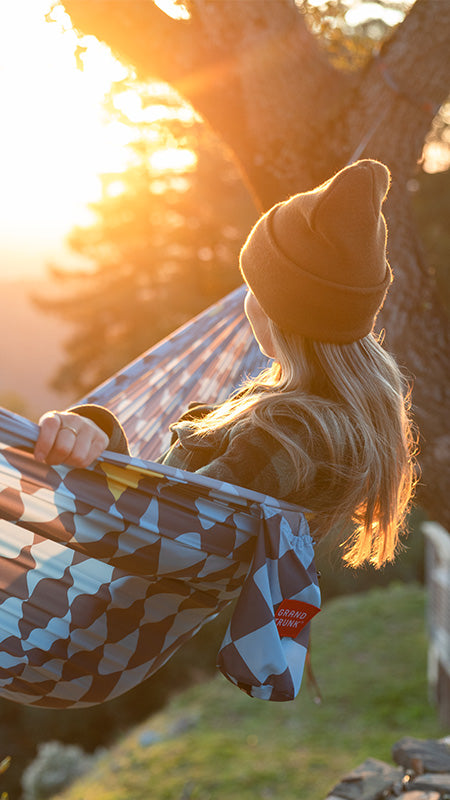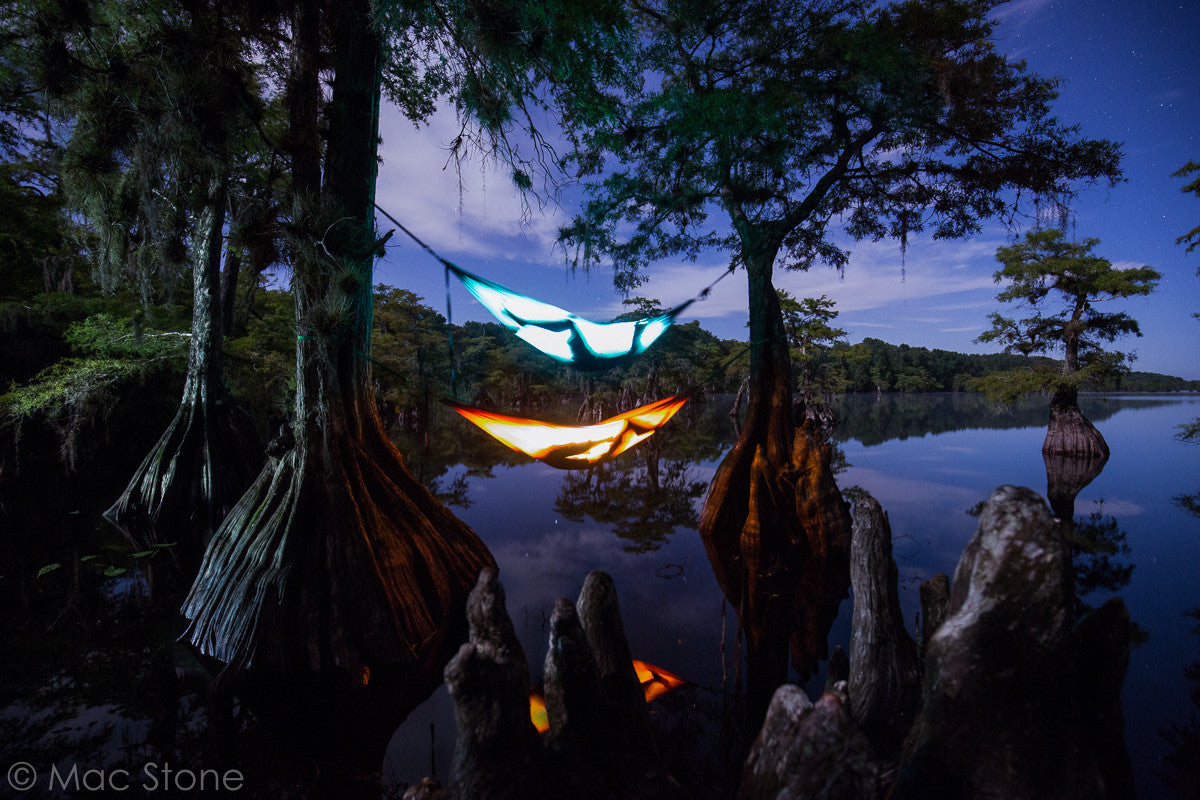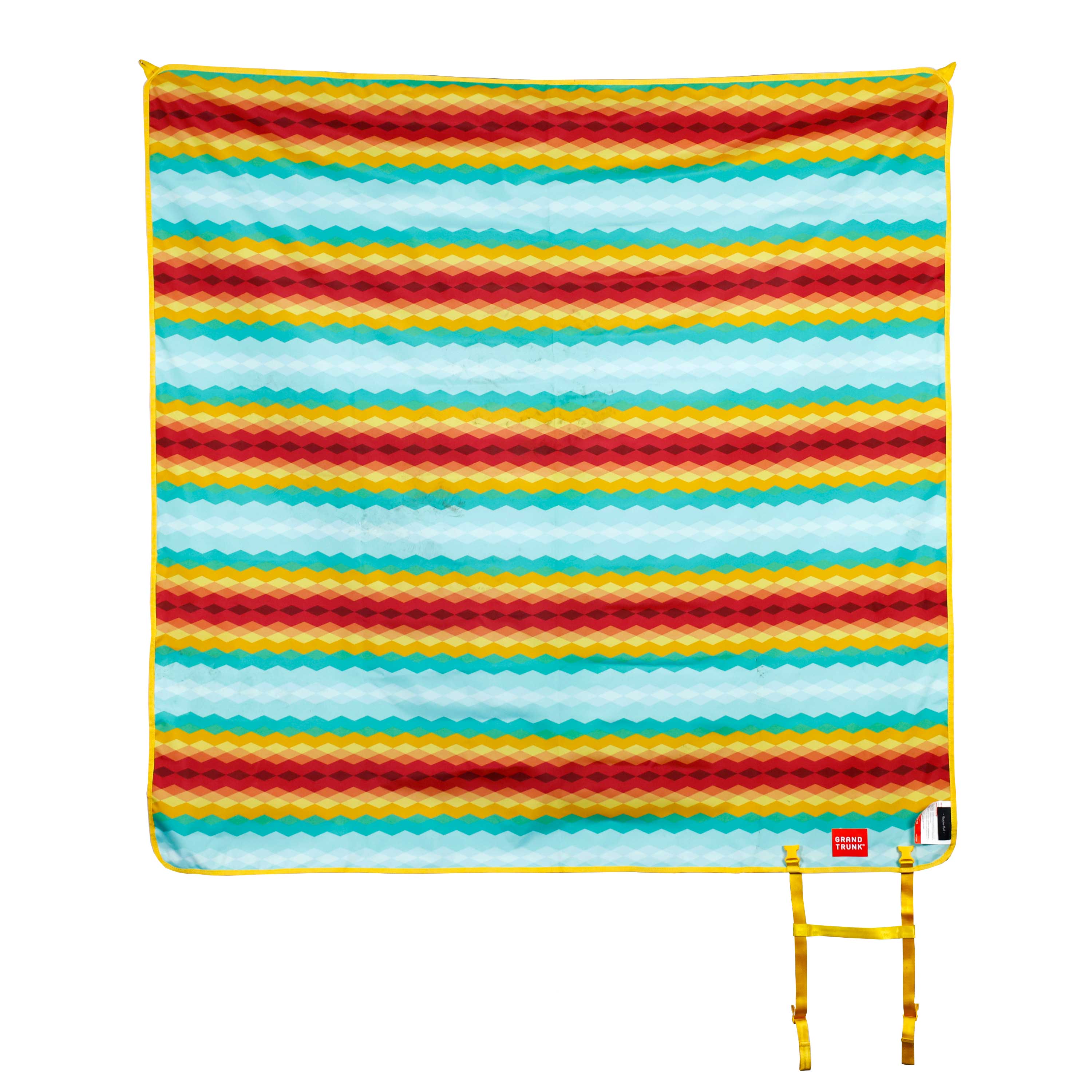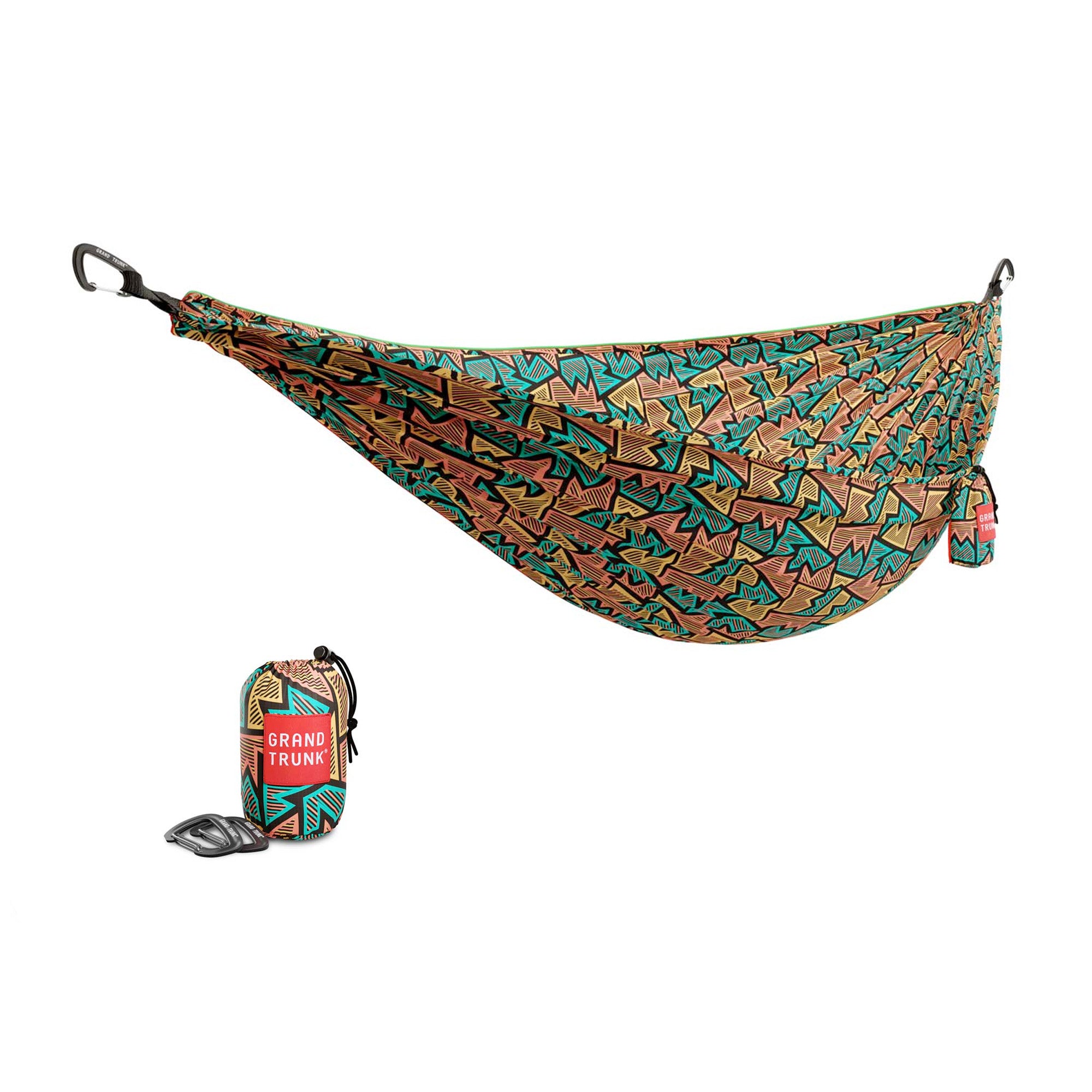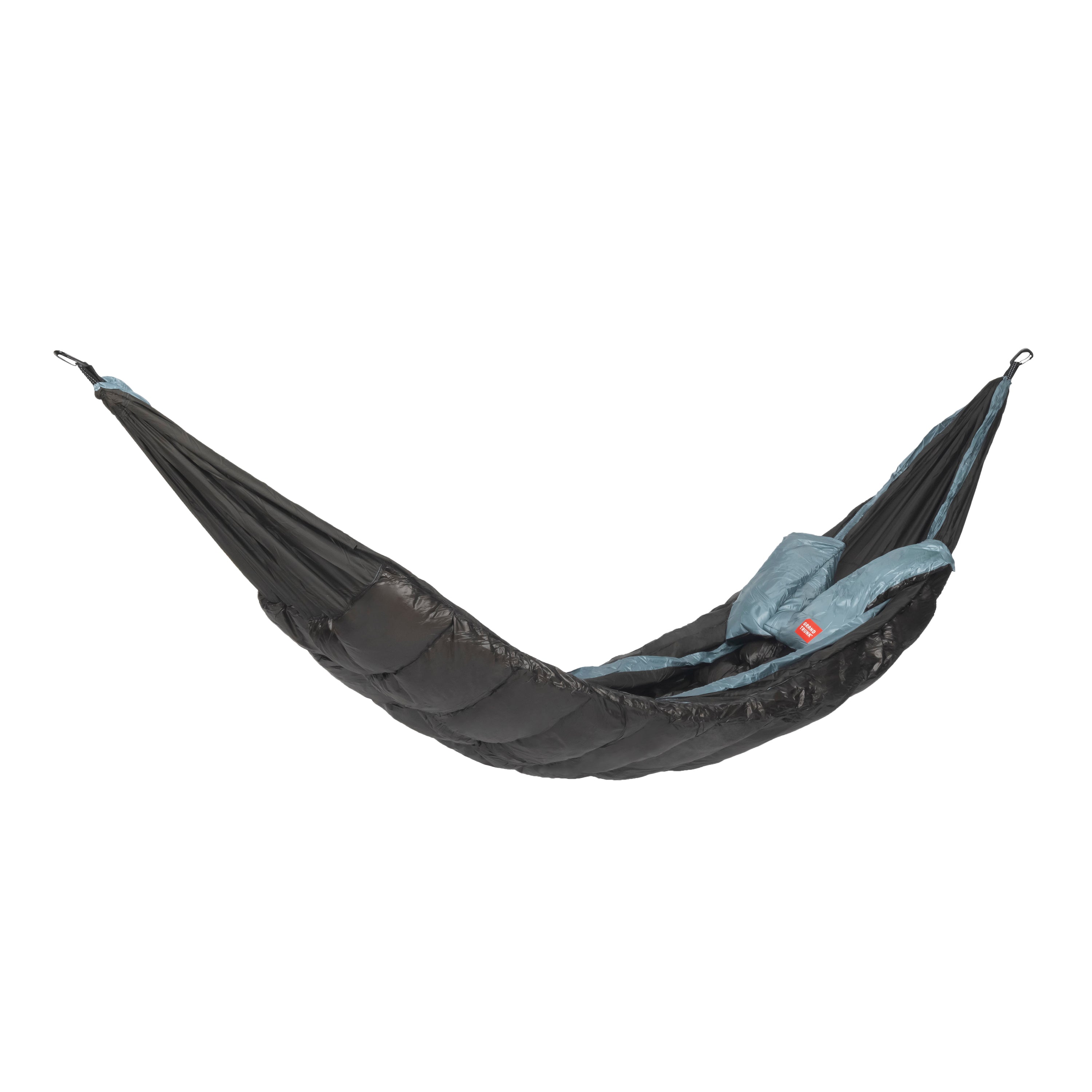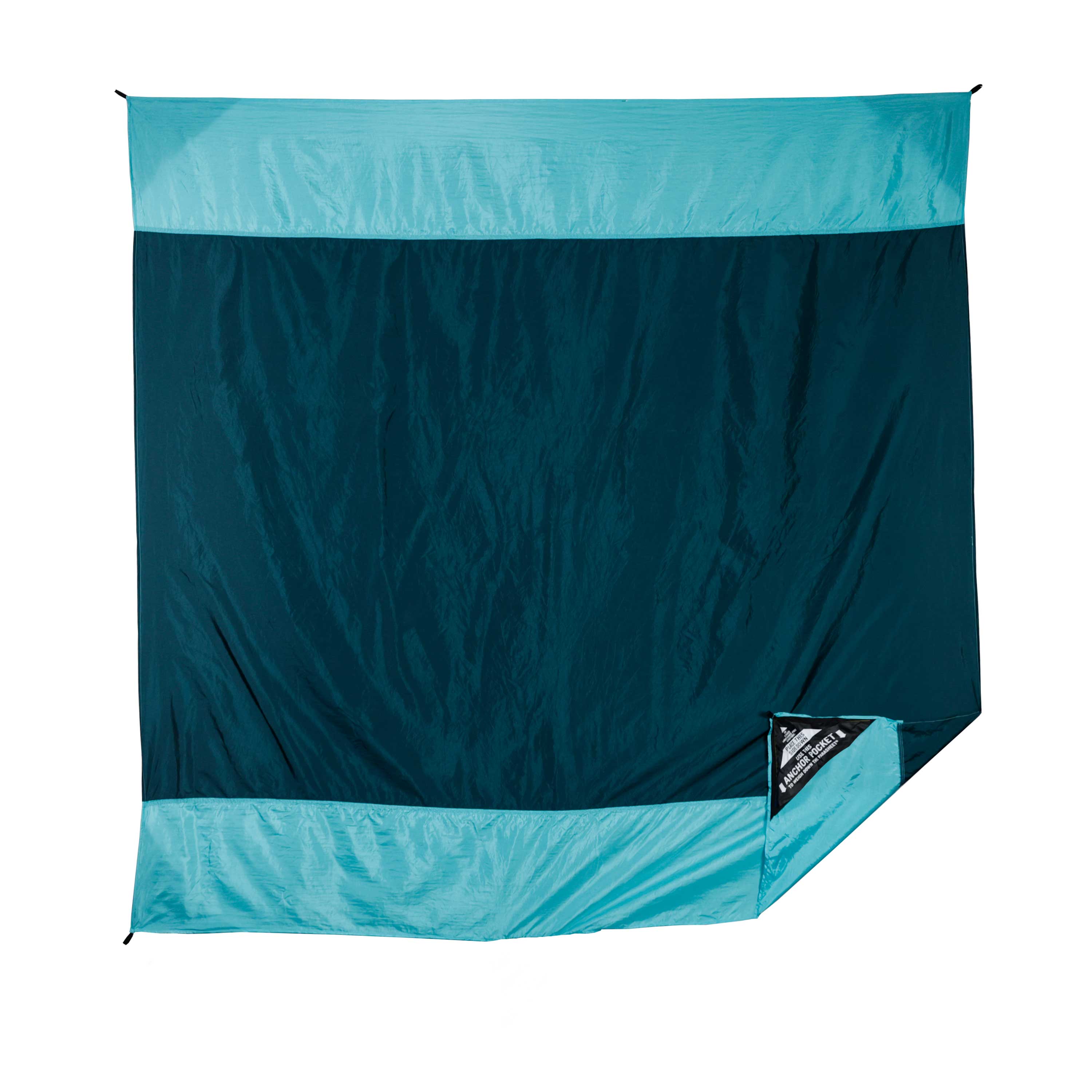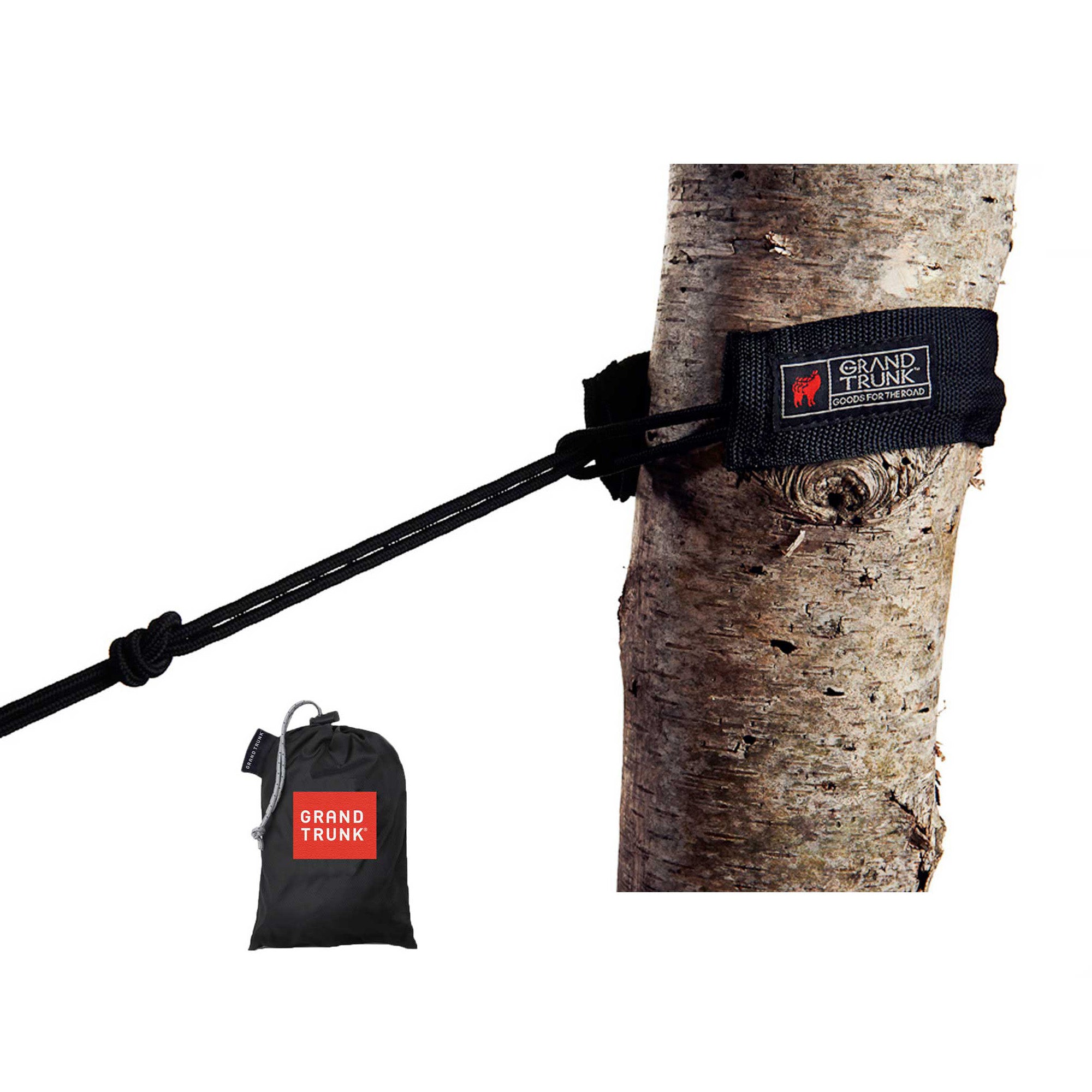Hailing from Florida, I grew up around hammocks, they're everywhere, but they're almost always and exclusively used for leisure. In the southern US, hammocks are to be enjoyed beneath the shade of a favorite oak tree, or set between the papery leaves of a pair of coconut palms on a white sand beach. They are the symbols of relaxation, summer, and retirement. They are rarely the vehicles of spontaneity or adventure. Not for me, though. When I see a hammock, I think of lightweight efficiency, a portable hotel offering the best views and the cheapest rates to destinations only limited by the reaches of my imagination.
My family and I would go on camping trips before I was old enough to walk. I started camping on my own before I turned 10, setting up a tent in my backyard looking skyward as the Earth slowly turned beneath the Milky Way. When I couldn't sleep outside, my bedroom ceiling glowed with constellation stickers. A good night was one spent beneath the stars.
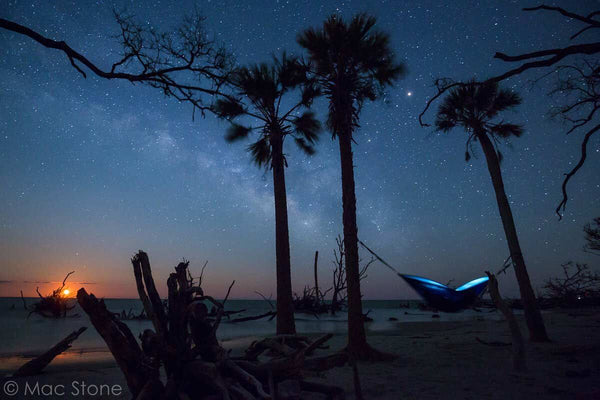
Hammock Camping to Avoid Exhaustive Weight and Exposure to Creatures of the Night
I started hammock camping out of necessity. When embarking on long trips or photo expeditions, the amount of gear I would have to consider was sometimes staggering. Tents, sleeping bags and ground pads would easily add exhaustive weight, but these bulky items would also compete for precious real estate in my backpack or kayak. A one-pound hammock was an instant solution to limited space, excessive weight, and the inconvenience of finding flat and dry surface. It's not a groundbreaking epiphany, after all, the Caribbean islanders introduced hammocks to early explorers as the answer to gnawing rodents, venomous snakes, and other ground-dwelling creatures of the night.
As a wildlife and conservation photographer, the places I normally photograph are swamps and wetlands, the very landscapes early settlers and modern urbanites seek to avoid. They're full of life, sometimes of the toothy variety, but the kind of creatures and flora that have adapted to life on the fringe, far from people. When immersed in these habitats, I often feel like I've traveled back in time and my imagination runs wild.
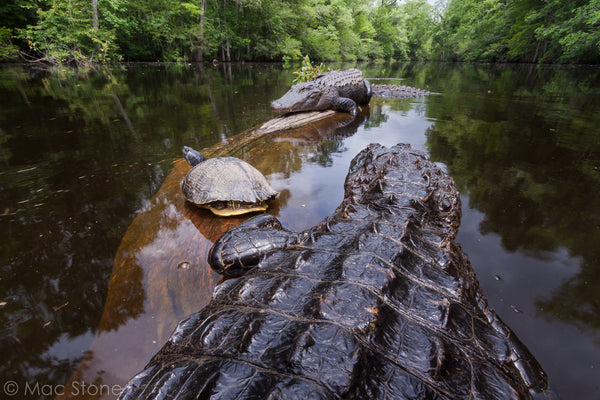
Cradled atop an old growth cypress tree or nestled between palms and pines, I feel the safety of weightlessness, the connection of my surroundings and appreciation for the canopy of stars above my head. You're supposed to be carefree in a hammock, but looking up at the stars I can't help to wonder what the skies will look like ten years from now.
Conservation of the Night
When we think of conservation, we typically think of land, water, animals, and air. What most of us might not realize is that the dark skies that birthed religions, inspired artists, and guided our ancestors are also natural resources worthy and in need of our protection. But they are disappearing at alarming rates as our urban lands and artificial lights expand further outward and upward, encroaching and outshining the heavens above.
The Hang The Moon project is all about inspiring the public to break routine and go outside to sleep under the stars using something as small and simple as a hammock. But it is also a plea, a call to action to preserve the skies and the constellations that has kept us dreaming and pondering of something greater than ourselves ever since mankind could arch its neck and look upward.
Written by Mac Stone @MacStonePhoto



